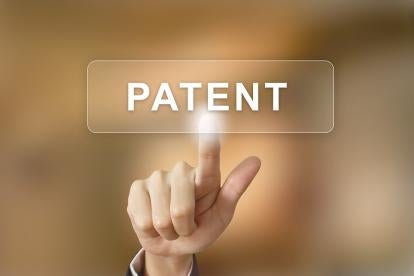A would-be petitioner must make several key decisions in deciding whether to proceed with a petition for inter partes review (IPR) and, once decided, in presenting a convincing case of unpatentability against the subject patent. Chief among them is the selection of prior art references (patents and printed publications) that will formulate the substance of the petition.
As anyone involved with patent prosecution can attest, the burden of disclosing all information material to patentability – an obligation imposed on those “associated with the filing and prosecution of a patent application,” 37 C.F.R. 1.56(a) – is a heavy one. Consequently, many patent cover pages display a litany of cited prior art references dutifully provided in an effort to avoid the slightest chance of unenforceability arising from a failure to comply with this requirement.
With a patent in the crosshairs, a potential first-time petitioner is faced with essentially three categories of prior art references at his disposal: 1) cited references applied against the patent by a USPTO examiner; 2) cited references not applied by an examiner; and 3) references not cited by either the patentee or the examiner. What is the Board’s position regarding references or arguments already presented during prosecution? Can references already acknowledged by an examiner be effectively asserted in an IPR with new arguments? What about references considered by the Central Reexamination Unit?[1]
To some degree, the rules related to IPR proceedings attempt to address this, albeit without a bright line standard. “In determining whether to institute or order a proceeding under this chapter, chapter 30 or chapter 31 [governing IPRs], the Director may take into account whether, and reject the petition or request because, the same or substantially the same prior art or arguments previously were presented to the Office.” 35 U.S.C. § 325(d). While the permissive language of Section 325(d) is light on guidance, several recent Board decisions in the current calendar year shed light on what the Board (or, more precisely, three-judge panels of the Board) considers in an IPR petition when faced with prior art that was associated with the patent during previous Patent Office proceedings.
In some cases, the petitioner attempts to use the same prior art references for the same purpose, and the Board will likely not require the patent owner to fight the same battle. For example, in Hulu, LLC v. Intertainer, Inc., IPR2014-01456 (Decision entered March 6, 2015), the Board, after identifying 35 U.S.C. § 325(d), declared that the “the same prior art . . . and arguments were presented previously to the Office” and exercised its “discretion” in denying institution. Decision at 7-8.
A common strategy may be to cast previously considered prior art in a new light. It won’t hurt if additional evidence is included. For example, in Praxair Distribution, Inc. v. INO Therapeutics LLC, IPR2015-00889 (Decision entered September 22, 2015), Praxair petitioned to review claims of U.S. Patent No. 8,573,209 in view of, among others, U.S. Patent No. 5,558, 083 (Bathe) and U.S. Patent No. 7,114,510 (Peters). INO Therapeutics argued that Praxair’s arguments were “essentially the same as the Examiner’s rationale in rejecting, and subsequently allowing, claim 1.” Decision at 9. The Board responded “[a]bsent a showing of ‘substantially the same . . . arguments,’ id., and considering that Petitioner includes additional evidence not considered by the examiner in the underlying prosecution . . . Patent Owner does not show that the inter partes review . . . would be improper under 35 U.S.C. § 325(d).” Decision at 10.[2]
The outer limits of ‘substantially the same arguments’ can be difficult to discern, and if the Board believes the use of a reference has been addressed, it may not be enough to suggest that a different aspect of that reference should be considered. In Microboards Technology, LLC v. Stratasys Inc., IPR2015-00287 (Decision entered May 28, 2015), the petitioner challenged certain claims of U.S. Patent No. 6,004,124 as anticipated by U.S. Patent No. 5,340,433 to Crump. Although during prosecution the Notice of Allowability stated that the ‘433 patent did not disclose a particular feature,’ the Petitioner asserted that the comments of the examiner were directed to a specific figure not relied on by Petitioner. In reciting Section 325(d), the Board noted “[b]ecause Crump, and specifically the question of whether Crump discloses or suggests [this feature], was previously considered by the Patent Office, the Board exercises its discretion under 35 U.S.C. § 325(d) as an additional basis to decline to institute inter partes review on this ground.” Decision at 11-12.
Evidence that was earlier cited but not addressed will tend to put the petitioner in a more favorable position. In Microsoft Corp. v. Parallel Networks Licensing, LLC, IPR2015-00486 (Decision entered July 15, 2015), Microsoft filed a petition seeking review of certain claims of U.S. Patent No. 6,415,335. According to the Board, though listed on Information Disclosure Statements initialed by the Examiner there was “no evidence that the Examiner considered the particular disclosures cited by Microsoft in the Petition.” Decision at 15. The Board declined to deny Microsoft’s petition on the basis of Section 325(d). Id.
In Cisco Systems, Inc. v. Crossroads Systems, Inc., IPR2014-01544 (Decision entered April 3, 2015), the Board, after affirming the petitioner’s position of a reasonable likelihood of prevailing on the challenged claims of U.S. Patent No. 7,051,147, noted that the patent owner did not dispute that the examiner had not addressed substantively during the prosecution phase the teachings of the prior art now asserted in the petition. The Board ultimately ordered institution of inter partes review. Decision at 13-15.
The judicious use of a new reference should typically be considered the ‘gold standard.’ In Praxair Distribution, Inc. v. INO Therapeutics LLC, IPR2015-00888 (Decision entered September 22, 2015), the petitioner challenged certain claims of U.S. Patent No. 8,776,794 as obvious in view of two references. The patentee urged the Board to not institute review because “the Examiner considered the two main references on which Petitioner relies.” Decision at 9. The Board, in view of Section 325(d), made clear that “[e]ach of the Petitioner’s grounds also relies on multiple additional references and declaration testimony . . . not before the Examiner. . . Section 325(d) is not applicable here, given the arguments and evidence put forth in the Petition.” Decision at 10 (emphasis added).
A distinct reference, however, is not an automatic pass to institution of review by the Board. In Nora Lighting, Inc. v. Juno Mfg., LLC, IPR2015-00601 (Decision entered August 12, 2015), Nora Lighting filed a petition requesting review of certain claims of U.S. Patent No. 5,505,419 to Gabrius, which had previously been involved in an ex parte reexamination in which the patentability of those claims was confirmed in view of U.S. Patent No. 4,972,339 to Gabrius and additional references. The subject petition alleged unpatentability of the same claims in view of U.S. Patent No. 3,104,087 to Budnick, along with four other patent references. Citing the discretion afforded by Section 325(d), the Board agreed with Juno Manufacturing that Budnick was duplicative of Gabrius ‘339:
Thus, although the references are not the same as those submitted for ex parte reexamination, the nature of the evidence as to the prior art at the time of the invention and the arguments are substantially the same as that which already has been presented to the Office in reexamination.
Decision at 11-12.[3]
Unfortunately, the nature of the Patent Trial and Appeal Board, with an increasing number of administrative patent judges tasked with handling an exploding number of requests for inter partes review, lends itself to a certain amount of non-uniformity in the interpretation and application of the laws under which it operates. In the end, Section 325(d) is nothing if not discretionary, and therein lies its ultimate unpredictability:
Although 35 U.S.C. § 325(d) permits the Board to reject a petition merely for the reason that the same or substantially the same prior art or arguments were considered previously in another proceeding before the Office, it does not require the Board to do so. In this case, we decline to exercise our discretion to reject the Petition under 35 U.S.C. § 325(d).
Good Technology Software, Inc. v. Mobileiron, Inc., IPR2015-01090 (Decision entered September 28, 2015), at 15.[4]
The entirety of this issue vanishes, of course, if a petitioner has found art never before the Patent Office during prosecution of the subject patent and asserts such art from a new perspective. But that is not always possible under the circumstances. Even so, it seems clear that a rehash of an examiner’s earlier analytical efforts, without more, will likely make the Board’s decision to deny the petition an easy one.
[1] Section 325(d) also applies to references previously before the Board, a topic for another article.
[2] See also Praxair Distribution, Inc. v. INO Therapeutics LLC, IPR2015-00891 (Decision entered September 22, 2015), at 9-10; IPR2015-00893 (Decision entered September 22, 2015), at 7-9 (“Patent Owner does not identify with specificity where ‘substantially the same . . . arguments’ – substantially the same combination of references – were before the Examiner.”).
[3] Interestingly, the Board’s analysis under Section 325(d) in Nora Lighting was a subsection of its obviousness analysis of Budnick and the outcome with respect to Section 325(d) may consequently have been part and parcel of this analysis. Decision at 11. See also Fresenius-Kabi USA, LLC v. Cubist Pharmaceuticals, Inc., IPR2014-00223 (Decision entered May 14, 2015), in which the Board declined to exercise its discretion under Section 325(d) “particularly in light of the foregoing determination that Petitioner has established a reasonable likelihood of prevailing on its patentability challenges.” Decision at 14.
[4] See also Agila Specialties Inc. v. Cephalon, Inc., IPR2015-00503 (Decision entered July 20, 2015) (“Here, even if we were to agree with Patent Owner that the prior art before the examiner and those asserted in the Petition might be considered ‘substantially the same prior art’ under § 325(d), we decline to exercise our discretion to deny the Petition on this basis in this case.”) Decision at 7-8.









 i
i


